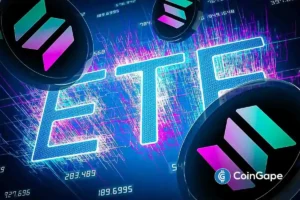The Growing Real-World Utility of Ethereum-Based Stablecoins
In recent weeks, Ethereum-based stablecoins have witnessed an unprecedented surge in user engagement, surpassing 750,000 unique weekly users. This milestone indicates a significant shift in how people are utilizing stablecoins, moving from purely speculative trading to genuine real-world applications. The increase in adoption not only highlights the steady integration of stablecoin technology into everyday transactions but also underscores the evolving landscape of digital finance.
A Leap in User Engagement
Ethereum’s stablecoins, particularly USDT (Tether) and USDC (USD Coin), have experienced remarkable user engagement, reaching an all-time high of over 750,000 individual senders on the platform. This upward trend has been especially notable since the beginning of 2025, indicating that more users are recognizing stablecoins as viable financial tools, rather than just vehicles for speculation. With the support of both retail and institutional users, we are witnessing what many are dubbing the “stablecoin season,” where the focus shifts towards practical uses of these digital assets.
Dominance of USDT and USDC
The stablecoin market remains heavily dominated by two major players: USDT and USDC, which together represent a staggering $114 billion of Ethereum’s $134 billion stablecoin supply. Tether leads this market with a supply of $73 billion, followed closely by USDC at $41 billion. While this duopoly seems unshakeable, the competitive landscape is rapidly changing. New entrants, including algorithmic and fiat-backed stablecoins, are challenging the status quo. As competition grows, issuers are motivated to innovate, offering lower fees, attractive yields, and appealing incentives for users, thus enriching the entire ecosystem.
Expanding Use Cases of Stablecoins
With more financial institutions and payment processors integrating stablecoin infrastructure, the applications of these assets are quickly diversifying. Today, stablecoins are not just limited to trading but are increasingly being used for real-world transactions such as cross-border settlements and on-chain payroll solutions. This expanded utility addresses long-standing issues within traditional financial systems, thereby setting the stage for stablecoins to become essential components of digital commerce. Their adoption is particularly beneficial in regions with high inflation, where stablecoins provide a more stable alternative to local currencies.
Increasing Institutional Adoption
The rise of Ethereum-based stablecoins isn’t limited to retail users; institutional adoption is also on the rise. Financial institutions are beginning to explore the possibilities offered by stablecoins, recognizing them as tools for enhancing efficiency and reducing costs in cross-border transactions and high-speed trading. With new regulations and clarity emerging around stablecoin operations, more businesses are confident in incorporating these digital assets into their existing frameworks. This institutional interest adds another layer of credibility and stability to the burgeoning stablecoin ecosystem.
Future Outlook
Looking ahead, the future of Ethereum-based stablecoins appears incredibly promising. The current surges in user engagement reflect a growing acknowledgment of their utility in everyday transactions. As competition among stablecoin issuers increases, consumers can expect a wider array of offerings, enhancing the overall user experience. Whether for remittances, online purchases, or payroll, stablecoins are poised to become a cornerstone of modern financial services, offering solutions to inefficiencies and fostering economic growth, especially in emerging markets.
In conclusion, Ethereum-based stablecoins are more than just speculation; they are becoming integral to the global economy. As this trend continues, we can expect to see further innovations and advancements that will solidify their place in the financial landscape.

















